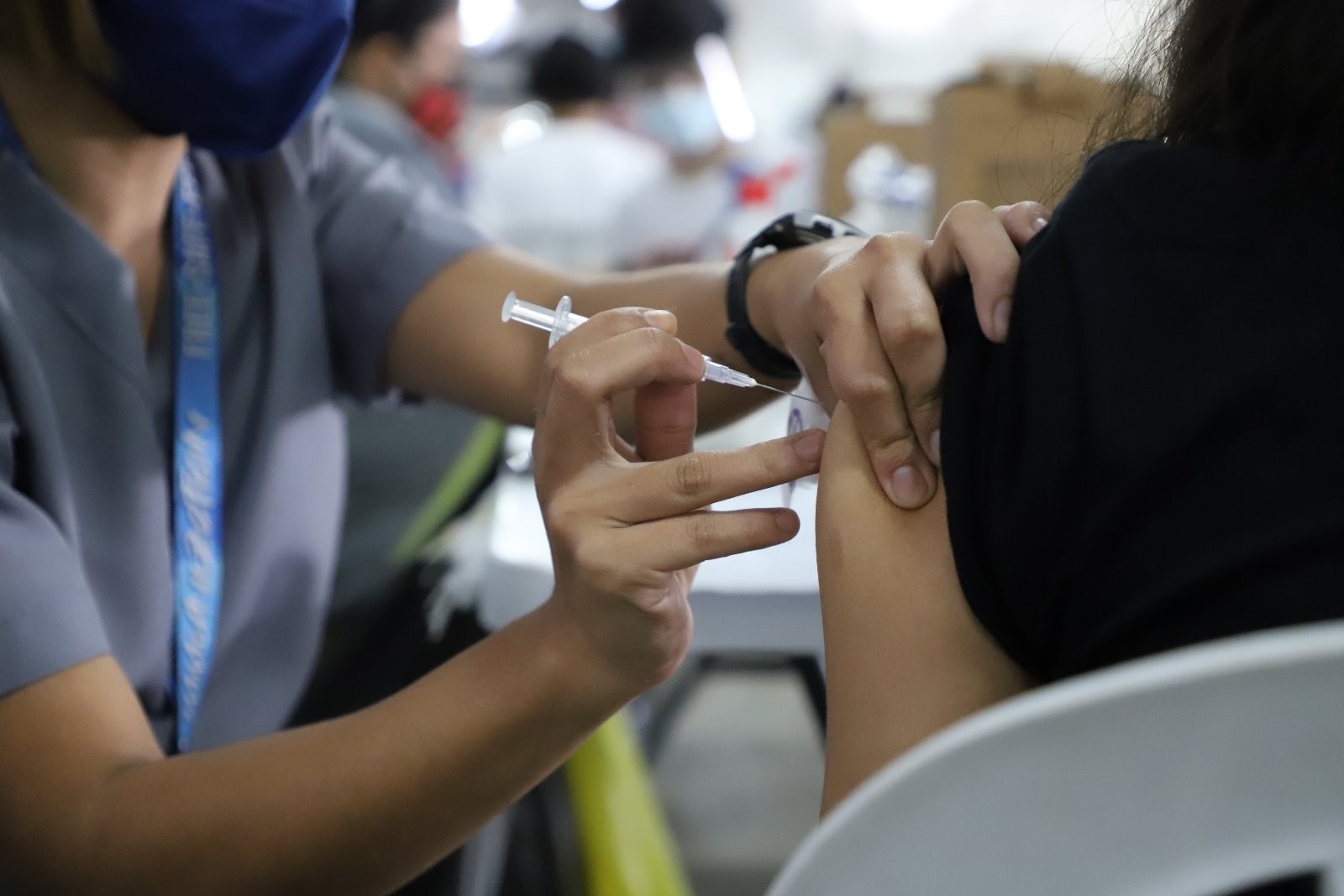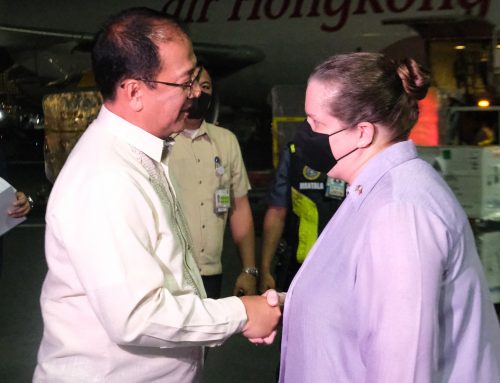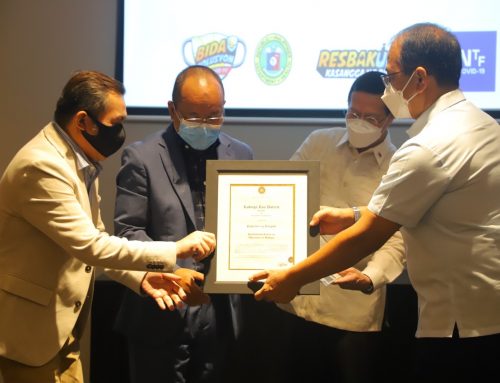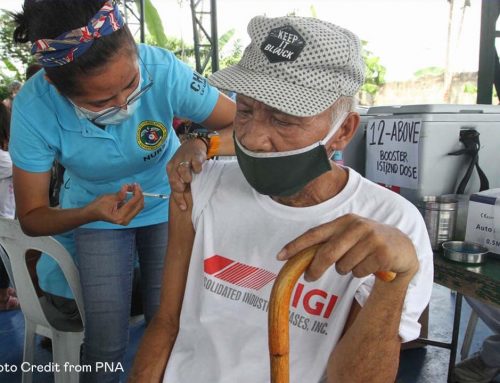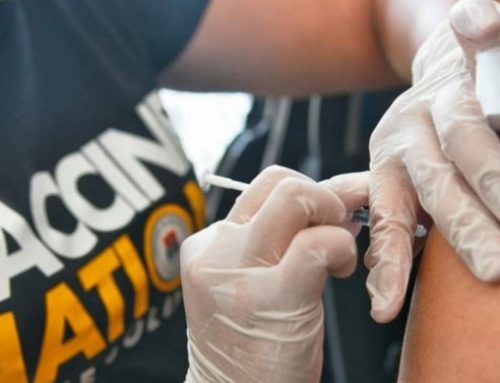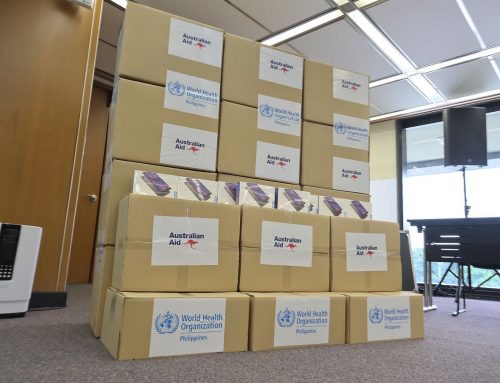PASIG CITY (6 November 2021) – The national government remains optimistic in achieving its target of administering more than one million COVID-19 doses daily by employing different strategies to scale up the vaccination output of local government units.
“The President’s directives are clear — increase LGUs’ capacities, ramp up vaccination, mobilize all government assets, and impose sanctions if necessary,” said National Task Force against COVID 19 Chief Implementer and vaccine czar Secretary Carlito G. Galvez, Jr.
“All of these were discussed with local chief executives, together with the support they require from the national government. Bayanihan pa rin ito. Sisiguruhin natin na walang maiiwan at wala tayong iiwanan,” Galvez added.
The vaccine czar, along with key officials of the Inter-agency Task Force for the Management of Emerging Infectious Diseases, the Department of Interior and Local Government, and the NTF met with provincial and city chief executives on Friday to discuss strategies that need to be implemented to achieve the country’s vaccination coverage target.
“All resources of the government will be mobilized to achieve our goal and these will be complemented by our private sector partners. Because at the end of the day, we share a common vision, and that is, to protect lives and ensure the sustainable reopening of the Philippine economy,” Galvez said.
He noted that while the focus of the current vaccination rollout will be residents of key cities, provinces, and those areas with a high level of economic activity, the national government will provide support to all regions.
“We will activate more vaccination sites and ensure that LGUs will bring in their residents to these sites to get inoculated. We will also strengthen the coordination between the DOTr and LGUs that have geographically isolated and disadvantaged areas and communities to fast track the deployment of vaccines, ” Galvez said.
“We are looking at addressing all challenges collectively with all levels of government, including private citizens and organizations working together,” he added.
According to Galvez, barangay officials will begin to map out the residents of their respective communities who are yet to receive the COVID-19 vaccine and bring them to vaccination sites.
Employees of national government agencies will also be trained so they can help augment the vaccinators of LGUs.
Civil society and non-government organizations will also be requested to serve as volunteers in vaccination sites, while religious leaders will be tapped to encourage their parishioners to get the COVID–19 jab.
“That’s why we encourage our LGUs to be creative and flexible in their vaccination rollout because vaccine supply is no longer an issue. We need to focus on generating demand and ensuring the seamless handling and administration of the vaccines,” Galvez stressed.
A total of 1,119,389 jabs were recorded on November 4, which included updated vaccination data submitted by LGUs. This is the highest jabs recorded since the vaccination roll-out started in March with the arrivals of millions of vaccines last October.
“With the concerted efforts of all sectors of society in ramping up our country’s vaccination throughput, we are confident that our daily jab rate will soon hit the 1.5 million mark and will be sustained,” said Galvez.
As of November 4, the Philippines has administered a total of 62,474,334 jabs nationwide bringing the total of fully vaccinated individuals to 28,718,856 or 37.23% of the country’s target population.
Achieving 70% vaccination coverage
Galvez said the Philippines aims to inoculate 70% of its target population or 54 million Filipinos with at least one dose by the end of November, adding that the same number of individuals need to be fully vaccinated by year end.
As of November 4, a total of 37,355,164 individuals or 48.43% of the target population have received at least one dose.
Galvez pointed out that the expansion of the vaccine coverage to the general population, including those within the 12-17 age group, will have a significant impact in the nation’s vaccine rollout.
He, however, said that LGUs must continue to give priority to individuals who are highly vulnerable to the disease such as senior citizens and persons with comorbidities.
“We will incentivize LGUs with high accomplishments and give sanctions to those underperforming, especially in the distribution and administration of these life-saving doses,” Galvez said.
The DILG, he said, has ordered LGUs to administer the vaccines delivered to them in the “most expeditious manner” and ensure the regular monitoring of vaccine inventories.
Based on discussions during the recent IATF meeting, Galvez said the NVOC will be issuing a memorandum containing incentives as well as disincentives in order to address the issue of vaccine hesitancy.
The NTF also encouraged LGUs to craft local ordinances that would support the ‘no vaccine preference policy’ to ensure that all vaccine supplies will be utilized.
“This will be a preview, as we push for mandatory vaccination, especially of those who are highly vulnerable and residents who live in high density populations,” Galvez said.
The chief implementer said various measures will also be implemented in the coming days such as the National Vaccination Days, which aim to administer at least five million doses. The event is scheduled to be held in the last week of November. END


